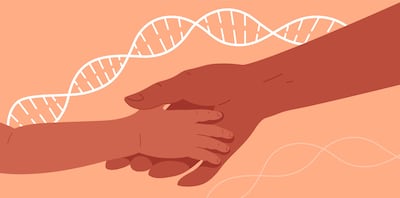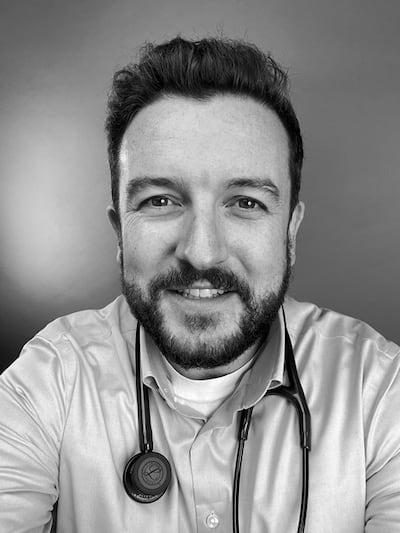
Having good genes always seems like a compliment when we inherit a perfect jawline or fast metabolism. We may not consider the curve in our nose or a high hairline to be welcome genetics however, but rather accept them as being a family trait.
But how much thought do we give to those hereditary conditions that can affect our health such as diabetes, arthritis, heart conditions and so on?
And how do we go about creating a family health portrait?
“Family is one component that contributes to our health, says Dr Knut Moe, GP with the Churchtown Family Practice in Dublin. “Some disorders can be said to ‘run in the family’. These are genetic variants that can be inherited from one generation to the next. Healthcare professionals frequently ask for a patient’s family history to help determine if a disorder could have been inherited genetically. These would typically be non-modifiable risk factors when compared to, say, reducing health risk by increasing exercise or improving diet, which would reduce a person’s risk of developing cardiovascular disease.”
READ MORE
Dr Moe says that a family history can help identify people with a higher risk of developing certain common disorders such as stroke, heart disease, high blood pressure, type 2 diabetes and certain cancers that come about in a family as a combination of genetic factors, lifestyle choices and environmental factors. It can also help to identify the risk of rarer conditions such as haemochromatosis or cystic fibrosis.

“Family history can help reduce risk in modifiable risk factors or take steps to reduce risk,” says Dr Moe. “By being aware of a strong family history, we can screen at an earlier age, as in certain cancers, such as colonoscopies, prostate screening, breast cancer screening at an earlier age. We can also take steps at an earlier age to modify risk factors of diseases that run in the family for example regular diet, exercise and quitting smoking.”
It’s also important to understand the actual risk involved, Dr Moe advises, as the more we know about our relative’s medical history, the better picture we can paint of issues that may relate to us and our children.
“Generally speaking, the closer the relative affected, and the younger they were when affected, the higher the potential risk,” says Dr Moe. “So, if a parent or sibling had a significant health problem such as a heart disease at a young age, this would be more of a risk than a great aunt or cousin having a cardiac event in their 80s.”
When it comes to considering the impact of genetic conditions, we should also take into account lifestyle and environmental factors as they can impact our health. Knowing what factors are at play and adjusting our lifestyle can help keep our health on track even in the face of hereditary conditions.
“When we say that something runs in the family, it is a combination of genetics and environmental factors that contributes to disease,” says Dr Moe. “There is often an ‘increased’ likelihood of developing a condition that is inherited. Taking steps to reduce modifiable risk factors is the best thing that can be done as well as early screening if you are at risk.”
Essentially, knowledge is power when it comes to our health and while we can’t change our genetics, there are things we can do when we are at risk.
“Be aware,” says Dr Moe. “Get screened regularly and discuss with your GP how often that should be. For example, if there is a tendency for high blood pressure or high cholesterol in your family, it is important to keep an eye on blood pressure and cholesterol periodically to ensure they are not rising. To minimise risk of high blood pressure, for example, it would be important to exercise regularly, reduce salt and red meat consumption. For cholesterol, follow a low-cholesterol diet including reducing diets high in saturated fats and reducing butter, creams and cheeses and eating leaner meats.
“For some specific conditions with high risks, tests can be done to determine your percentage risk of certain conditions. For example, BRCA gene and likelihood of breast cancer or carrier status for haemochromatosis.”
Remember that our predisposition to certain conditions does not always depend solely on our genes but rather a combination of our genetic and nongenetic factors. So, while we can’t outsmart our inherited DNA, we can proactively choose a lifestyle that may positively influence how our genes are expressed.
“We can’t change our genetic make-up,” says Dr Moe, “however genetic make-up and how those genes are expressed are two different things. Making healthier choices in terms of diet, exercise and lifestyle factors can minimise the tendency of certain diseases to develop.”
How to collect your family medical history
Talk to your family – While it makes perfect sense to talk to your family about their medical history, it’s not often done until you need to know due to its personal nature. It is preferable to uncover an accurate family medical history from as early as possible. Ask your closest relatives from both sides of your family about their health including grandparents, aunts, uncles and cousins.
If you are estranged from family members or adopted, researching your family history may be more difficult. Continue to ask questions from any family members you are still connected with. They may know more information than you. Check death certificate records to find out cause of death of deceased relatives and contact the adoption agency for birth parent information if you are adopted. If all the information is not forthcoming, an incomplete family medical history will still be useful.
Ask for specifics – To understand your own risk, you must have as much information as possible. Ask relatives about specific conditions that are known to be hereditary and run in families such as health conditions like cholesterol, high blood pressure, heart disease, diabetes, stroke or hereditary cancers. Talk about their current and past health conditions including finding out the ages they were diagnosed with a condition. Also, if possible, find out the cause of death and age of relatives who have died.
Make a record – Don’t assume you will remember this information when it is needed. Record as much health information as possible to create a portrait of familial health conditions. This information is helpful not only for you but also for your children and other relatives who will need this information also.
Talk to your doctor – When you compile a family health history, whether you have all the information or not, share this information with your doctor as it can help to consider if preventative investigation or screening is needed. Your doctor will be able to interpret this information and assist you in making lifestyle changes if needs be.














